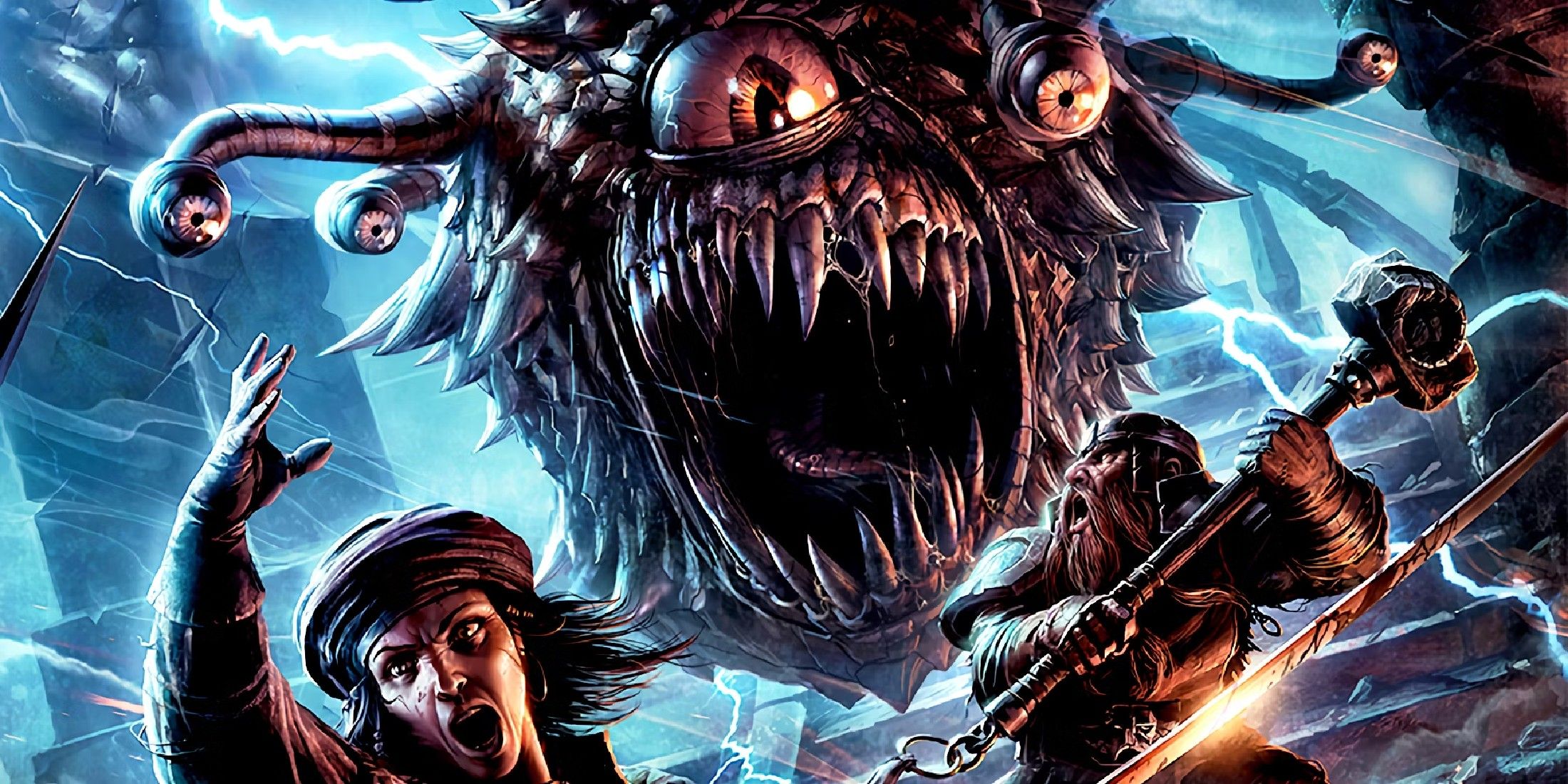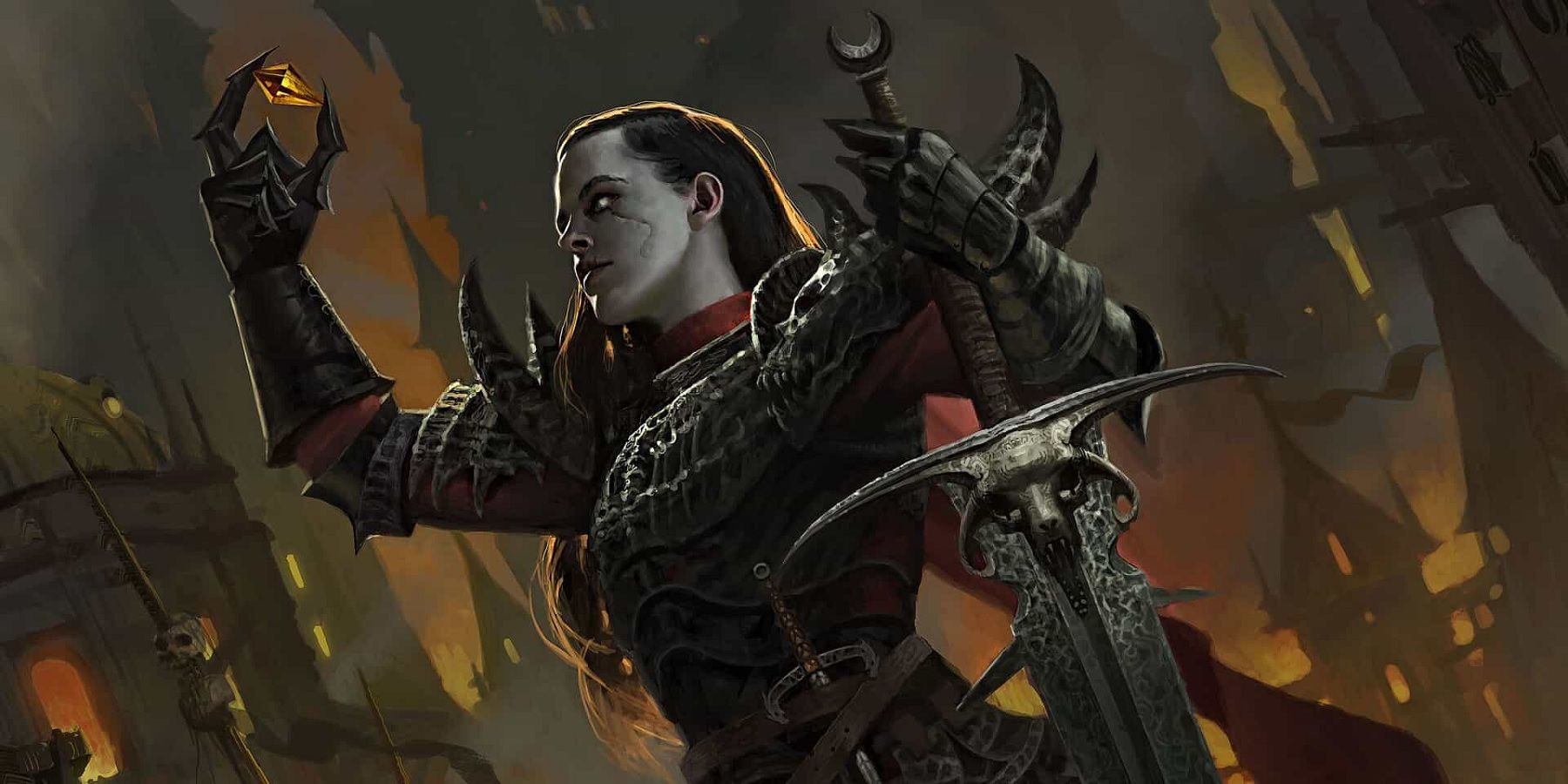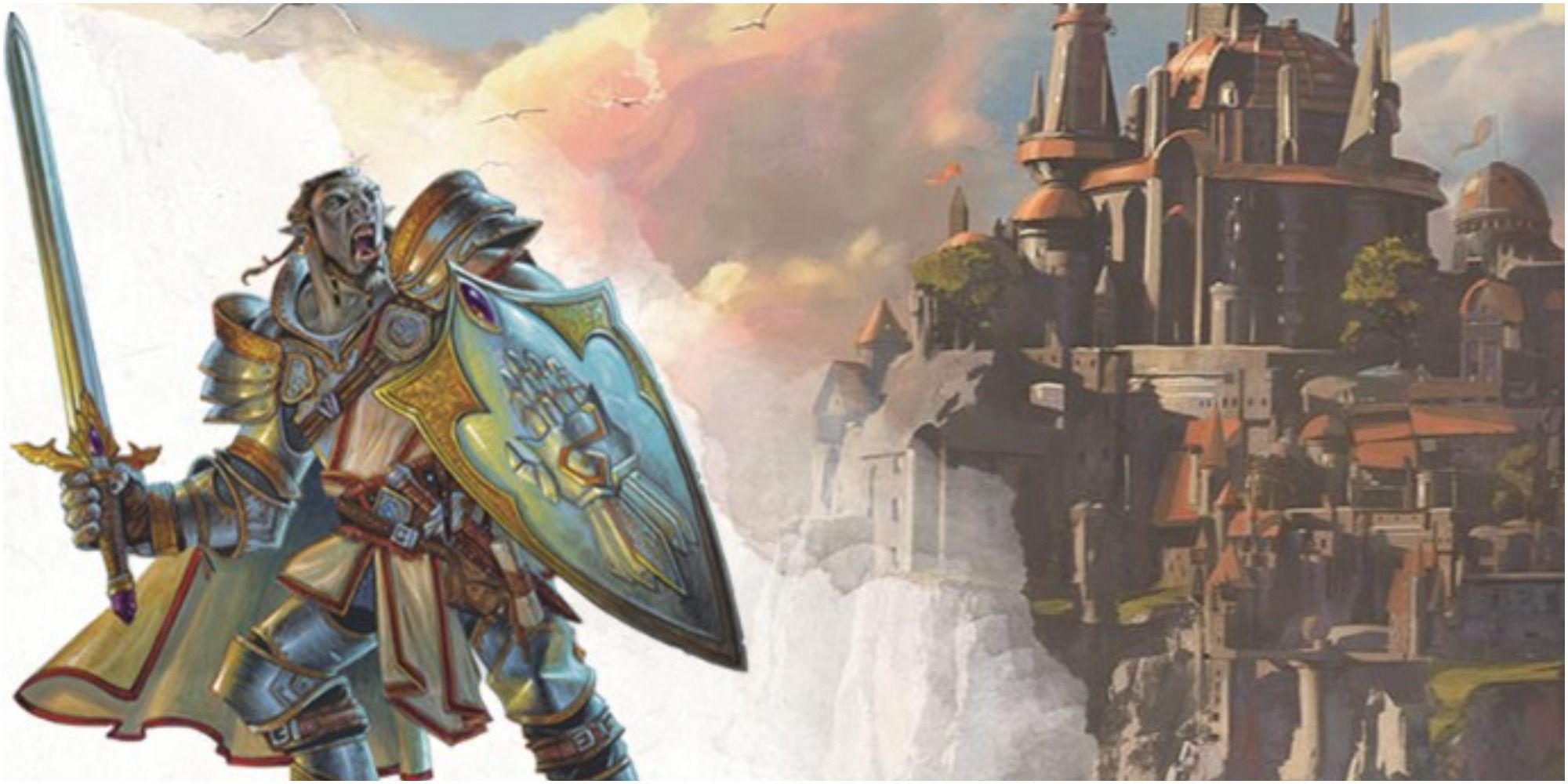One of the most impressive and divisive character archetypes in Dungeons & Dragons is the straight arrow Paladin class, known for being the Lawful Good fighter/healer combo in older editions. While the Paladin has many differences from Clerics, both have many of the same strengths and weaknesses that could be rebalanced as 5E eventually moves into 6E.
Currently, the Paladin class itself is one of the better when it comes to directing players on how to role-play their characters, even if that guidance can be somewhat limiting. However, one already existing concept and subclass within the Dungeons & Dragons Dungeon Master's Guide could be expanded to give a much wider range of options for Paladins, making them more dynamic and interesting to play as.
Expanding the Paladin's Oathbreaker Subclass
Among the many subclasses for the Paladin, referred to as a character's Sacred Oath, the Oathbreaker is unique in that it actually requires an Evil alignment, rather than the standard Lawful Good that was previously forced on the class in older editions. This makes for a particularly interesting subclass already, usually being used by a Dungeon Master to craft an enemy for players to fight, since Evil characters tend to be in the realm of one-off adventures rather than ongoing campaigns. That being said, this flexibility in the rules that allows for there to be Evil Paladins could be useful when it comes to giving the class more depth in the transition from D&D 5E to 6E.
One way to improve on the Oathbreaker, both for the sake of creating villains as well as player characters, is to allow for the change in alignment to be more of a slider, rather than landing on two extremes. Essentially, players and Dungeon Masters can make more complex characters that have access to a selection of the Paladin's combat and magic benefits. Additionally, as is often the case for D&D's Bard Class, the Paladin using Charisma for spellcasting could also lead to fun role-playing in more Chaotic alignments.
While it is currently possible in D&D 5E for most Paladins to be any alignment, 6E could directly reference the older editions by offering different features and spells based on the chosen alignment. Specifically, it could give players more access to heavier combat features and damaging spells the closer the player leans towards Evil, and more healing options for a Good player, with Neutral players being a middle ground with access to weaker versions of both. Considering the way that many RAI Dungeon Masters still hold to the Lawful Good requirement from older editions, this could give players a much more interesting way to direct their role-playing.
Expand the Paladin's Spell List
One of the major drawbacks to the Paladin is its limited access to magic, with a spell list that ends at 5th level, setting the character's magic as more of a backup than a primary aspect of combat. So, when it comes to improving the class in 6E, updating this spell list would be a strong start for how to make the Paladin a better option. There are even a number of Homebrew spells made by D&D fans that could perfectly fit into the arsenal of an oath-bound fighter and healer.
This is a common problem with a few different spellcasting classes, where the range of class-specific spells is often both limited and underwhelming in many cases. So, giving the Paladin access to more deity-powered spells that allow players to heal or bolster themselves and other party members could make the class more unique. However, there is one spell offered to some of the strongest spellcasters in Dungeons & Dragons that could be reworked into a higher level Paladin feature, rather than a part of the class' spell list.
The limiting of Paladins to only getting spells up to 5th level means that not only does the class not get access to some of the most powerful healing spells, it also keeps these characters from obtaining the Wish spell. Considering that a Paladin's spellcasting ability comes from the deities in Dungeons & Dragons lore, the ability to make a wish that reshapes the world almost seems built for this class. So, if Paladins can't get the Wish spell added to their list, then working a similar ability into a feature around 17th level or later, only rarely usable and limited to their type of deity could be a perfect catchall to overcome their lack of higher magic.
Dungeons & Dragons 5E is available now.






